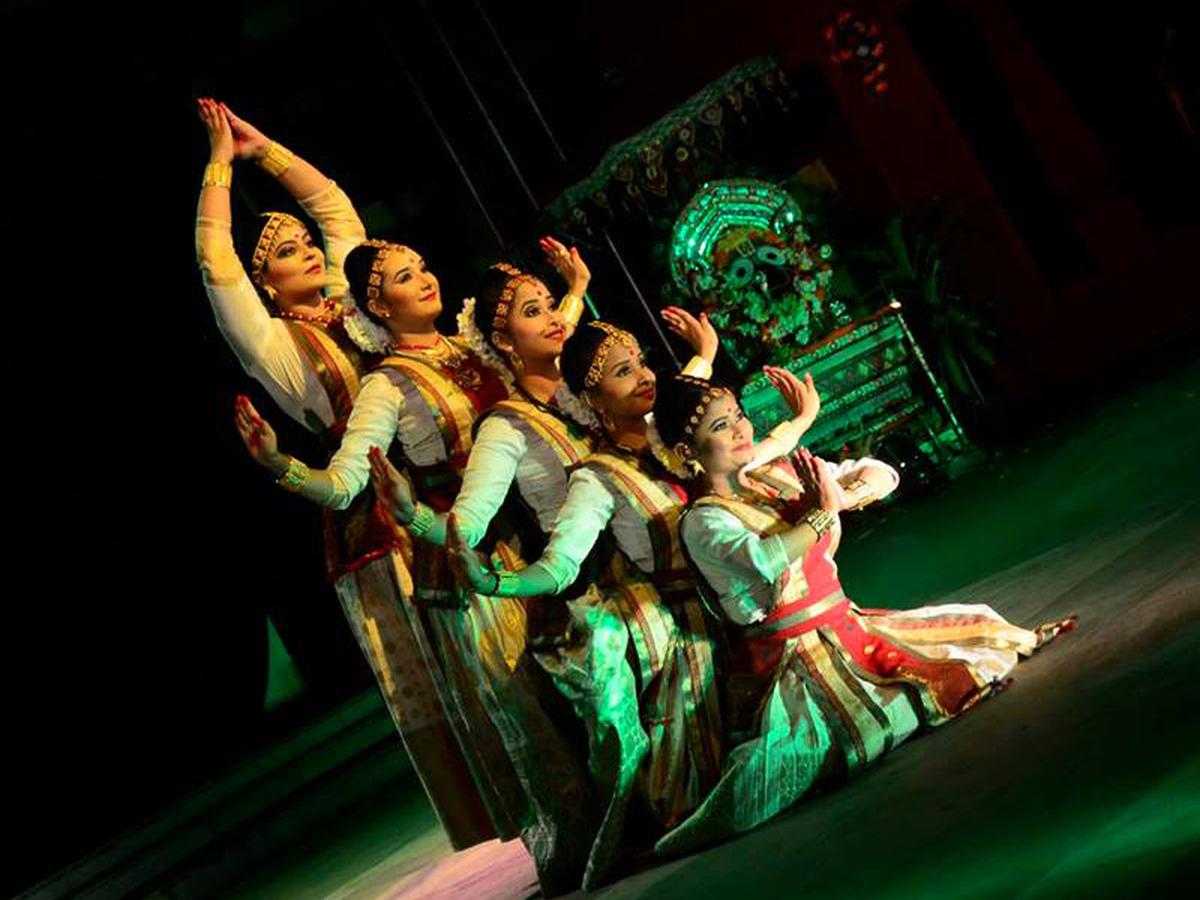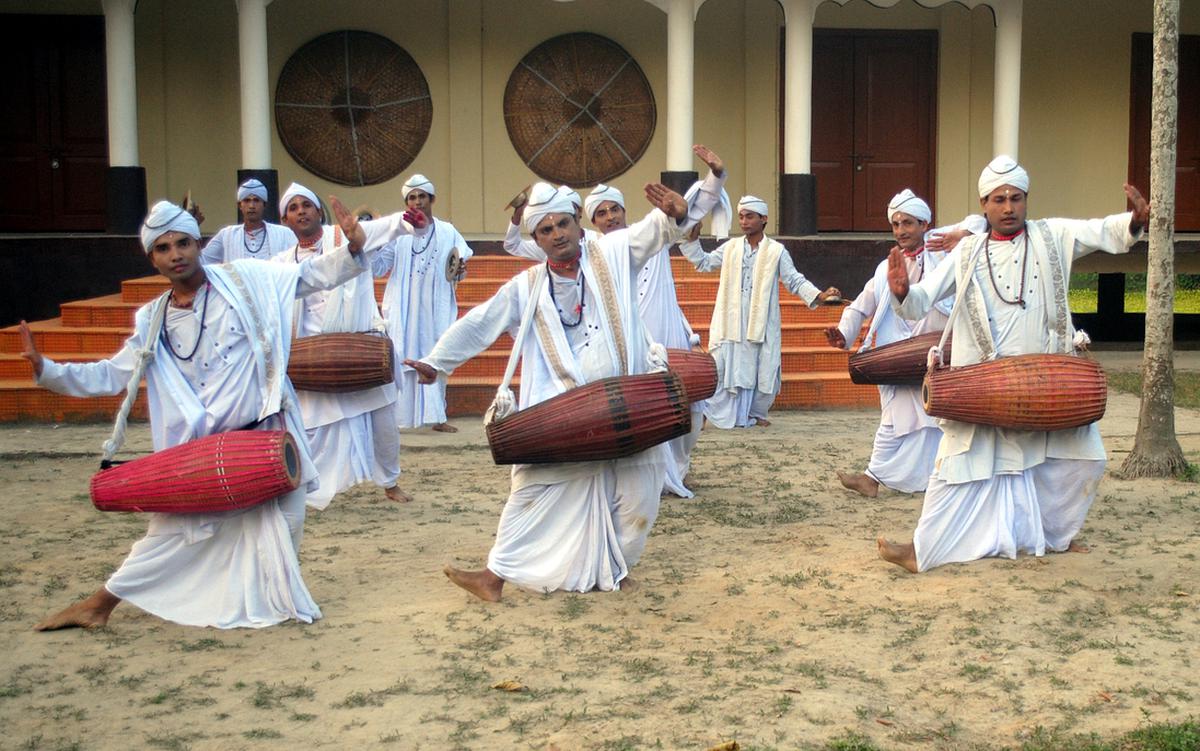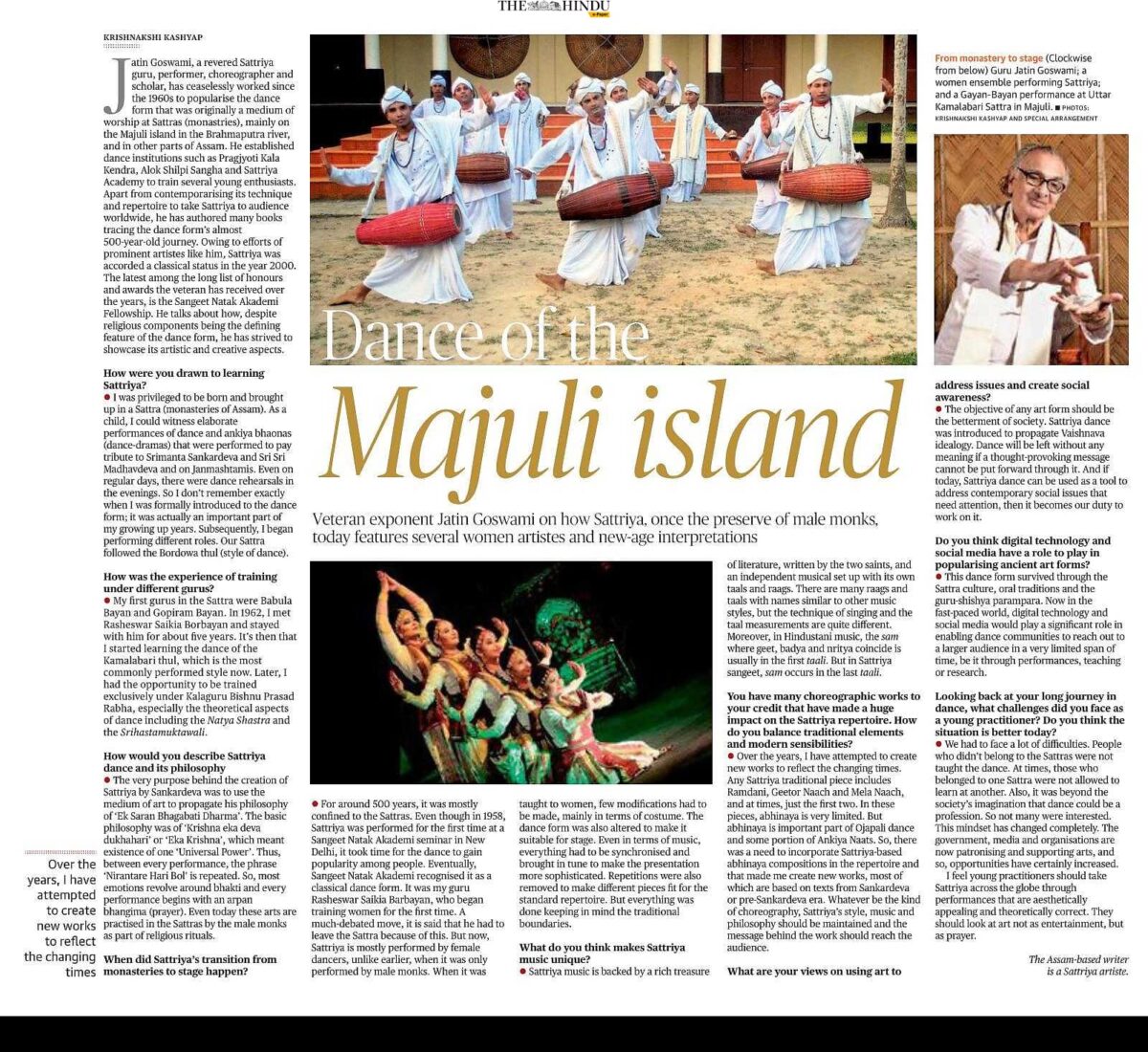Veteran exponent Jatin Goswami on how Sattriya, once the preserve of male monks, today features several women artistes and new-age interpretations.
Jatin Goswami, a revered Sattriya guru, performer, choreographer and scholar, has ceaselessly worked since the 1960s to popularise the dance form that was originally a medium of worship at Sattras (monastries), mainly on the Majuli island in the Brahmaputra river, and in other parts of Assam. He established dance institutions such as Pragjyoti Kala Kendra, Alok Shilpi Sangha and Sattriya Academy to train several young enthusiasts. Apart from contemporarising its technique and repertoire to take Sattriya to audience worldwide, he has authored many books tracing the dance form’s almost 500-year-old journey. Owing to efforts of prominent artistes like him, Sattriya was accorded a classical status in the year 2000. The latest among the long list of honours and awards the veteran has received over the years, is the Sangeet Natak Akademi Fellowship. He talks about how, despite religious components being the defining feature of the dance form, he has strived to showcase its artistic and creative aspects.
How were you drawn to learning Sattriya?
I was privileged to be born and brought up in a Sattra (monasteries of Assam). As a child, I could witness elaborate performances of dance and ankiya bhaonas (dance-dramas) that were performed to pay tribute to Srimanta Sankardeva and Sri Sri Madhavdeva and on Janmashtamis. Even on regular days, there were dance rehearsals in the evenings. So I don’t remember exactly when I was formally introduced to the dance form; it was actually an important part of my growing up years. Subsequently, I began performing different roles. Our Sattra followed the Bordowa thul (style of dance).
How was the experience of training under different gurus?
My first gurus in the Sattra were Babula Bayan and Gopiram Bayan. In 1962, I met Rasheswar Saikia Borbayan and stayed with him for about five years. It’s then that I started learning the dance of the Kamalabari thul, which is the most commonly performed style now. Later, I had the opportunity to be trained exclusively under Kalaguru Bishnu Prasad Rabha, especially the theoretical aspects of dance including the Natya Shastra and the Srihastamuktawali.
A women ensemble led by Krishnakshi Kashyap performing Sattriya Photo Credit Special Arrangement

How would you describe Sattriya dance and its philosophy
The very purpose behind the creation of Sattriya by Sankardeva was to use the medium of art to propagate his philosophy of ‘Ek Saran Bhagabati Dharma’. The basic philosophy was of ‘Krishna eka deva dukhahari’ or ‘Eka Krishna’, which meant existence of one ‘Universal Power’. Thus, between every performance, the phrase ‘Nirantare Hari Bol’ is repeated. So, most emotions revolve around bhakti and every performance begins with an arpan bhangima (prayer). Even today these arts are practised in the Sattras by the male monks as part of religious rituals.
Sattriya performer and guru Jatin Goswami - Photo Credit Prabhakar De

A much-debated move, it is said that he had to leave the Sattra because of this. But now, Sattriya is mostly performed by female dancers, unlike earlier, when it was only performed by male monks. When it was taught to women, few modifications had to be made, mainly in terms of costume. The dance form was also altered to make it suitable for stage. Even in terms of music, everything had to be synchronised and brought in tune to make the presentation more sophisticated. Repetitions were also removed to make different pieces fit for the standard repertoire. But everything was done keeping in mind the traditional boundaries.
What do you think makes Sattriya music unique?
Sattriya music is backed by a rich treasure of literature, written by the two saints, and an independent musical set up with its own taals and raags. There are many raags and taals with names similar to other music styles, but the technique of singing and the taal measurements are quite different. Moreover, in Hindustani music, the sam where geet, badya and nritya coincide is usually in the first taali. But in Sattriya sangeet, sam occurs in the last taali.
You have many choreographic works to your credit that have made a huge impact on the Sattriya repertoire. How do you balance traditional elements and modern sensibilities?
Over the years, I have attempted to create new works to reflect the changing times. Any Sattriya traditional piece includes Ramdani, Geetor Naach and Mela Naach, and at times, just the first two. In these pieces, abhinaya is very limited. But abhinaya is important part of Ojapali dance and some portion of Ankiya Naats. So, there was a need to incorporate Sattriya-based abhinaya compositions in the repertoire and that made me create new works, most of which are based on texts from Sankardeva or pre-Sankardeva era. Whatever be the kind of choreography, Sattriya’s style, music and philosophy should be maintained and the message behind the work should reach the audience.
What are your views on using art to address issues and create social awareness?
The objective of any art form should be the betterment of society. Sattriya dance was introduced to propagate Vaishnava idealogy. Dance will be left without any meaning if a thought-provoking message cannot be put forward through it. And if today, Sattriya dance can be used as a tool to address contemporary social issues that need attention, then it becomes our duty to work on it.
Do you think digital technology and social media have a role to play in popularising ancient art forms?
This dance form survived through the Sattra culture, oral traditions and the guru-shishya parampara. Now in the fast-paced world, digital technology and social media would play a significant role in enabling dance communities to reach out to a larger audience in a very limited span of time, be it through performances, teaching or research.
Looking back at your long journey in dance, what challenges did you face as a young practitioner? Do you think the situation is better today?
We had to face a lot of difficulties. People who didn’t belong to the Sattras were not taught the dance. At times, those who belonged to one Sattra were not allowed to learn at another. Also, it was beyond the society’s imagination that dance could be a profession. So not many were interested. This mindset has changed completely. The government, media and organisations are now patronising and supporting arts, and so, opportunities have certainly increased.
I feel young practitioners should take Sattriya across the globe through performances that are aesthetically appealing and theoretically correct. They should look at art not as entertainment, but as prayer.
The Guwahati-based writer is a well-known Sattriya artiste.

Gayan bayan performance at Kamalabari Sattra Photo Credit Special Arrangement


